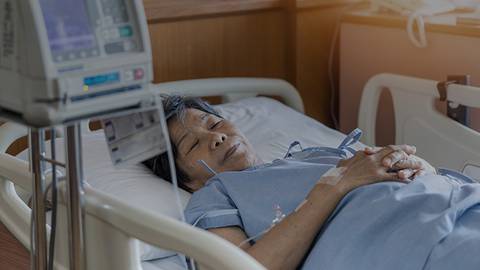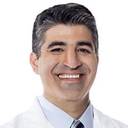Announcer:
Welcome to CME on ReachMD. This episode is part of our MinuteCME curriculum.
Prior to beginning the activity, please be sure to review the faculty and commercial support disclosure statements as well as the learning objectives.
Dr. Maddocks:
This is CME on ReachMD, and I’m Dr. Kami Maddocks. Here with me today is Dr. Matthew Matasar.
Let’s dive right in and review the clinical implications of using bispecific antibodies and antibody-drug conjugates in follicular lymphoma. Dr. Matasar, what do you have for us?
Dr. Matasar:
Thanks, Dr. Maddocks. So clearly, in follicular lymphoma, the times they are a-changing. And against a historical backdrop where standard of care treatment of follicular lymphoma, we had chemoimmunotherapy, we have immunomodulatory drugs such as lenalidomide, and after that, we had no single standard of care. We have medicines like copanlisib, PI3K inhibitors, which have tolerability but difficult schedules with weekly intravenous therapy, 3 out of 4. We have tazemetostat, which has monotherapy activity and good tolerability, but not such durable responses. We have CAR T-cell therapy which are very active, but carry a very clear toxicity profile and has well-known access issues. Against this backdrop, we now have our first approval of bispecific antibody therapy in the form of mosunetuzumab, a drug that is also T-cell engaging, but off the shelf in the form of a bispecific antibody directed against CD20 and CD3, and this drug clearly has very good activity, with overall response rates of 80%, CR rates of 60%, and durable responses with ongoing responses past 2 years, coupled with a favorable toxicity profile, with low rates of cytokine release syndrome and other key toxicities.
We also have, on the horizon, the possible emergence of bispecific antibodies, such as polatuzumab vedotin and loncastuximab tesirine, which have clearly changed our management of aggressive B-cell lymphomas such as diffuse large B-cell lymphoma, and with emerging data suggesting that they may indeed play a role in the treatment of patients with relapsed or refractory follicular lymphoma.
So clearly, we have a broadening therapeutic armamentarium as we approach patients with relapsed or refractory follicular lymphoma that gives us, as oncologists, more opportunity to individualize our treatment programs for individual patients. It’s very promising and very exciting times, and I look forward to ongoing progress in this field.
Dr. Maddocks:
Thank you, Dr. Matasar. You know, it was really nice when the chimeric antigen receptor T-cell products targeting CD19 were approved in relapsed/refractory follicular lymphoma, but I think that it has – unlike in large cell lymphoma, or maybe even mantle cell lymphoma – it’s been a little bit more difficult to define the population of patients with follicular lymphoma who are best served by these therapies, just because of balancing the toxicity profile and the access to these therapies, which may, you know, in a disease that maybe most patients, again, may live a prolonged life or have high responses to other therapies that are more readily available. So I think seeing the first approval of the bispecific antibody mosunetuzumab in relapsed/refractory follicular lymphoma was really exciting because this was an immune therapy with very high efficacy, what appears thus far to be durable remissions, but it seemed like it was going to be, by the data, something that had less toxicity and certainly much easier to access than CAR T-cell therapy for those patients with relapsed/refractory follicular lymphoma. The antibody-drug conjugates, while none of these currently are approved in relapsed/refractory follicular lymphoma, we’ve seen them to be very promising in diffuse large B-cell lymphoma, and in general have manageable toxicity profiles. In addition to potential single-agent activity in follicular lymphoma, I also think this allows us to be able to look at using these agents in combination with other agents that have activity in follicular lymphoma to hopefully produce more durable remissions in these patients. So I think a lot of excitement in this field right now with these novel targeted immunotherapies.
Well, this has been a brief but great discussion. Unfortunately, our time is up. Thanks for listening.
Announcer:
You have been listening to CME on ReachMD. This activity is provided by Prova Education and is part of our MinuteCME curriculum.
To receive your free CME credit, or to download this activity, go to ReachMD.com/Prova. Thank you for listening.


 In support of improving patient care, Global Learning Collaborative (GLC) is jointly accredited by the Accreditation Council for Continuing Medical Education (ACCME), the Accreditation Council for Pharmacy Education (ACPE), and the American Nurses Credentialing Center (ANCC) to provide continuing education for the healthcare team.
In support of improving patient care, Global Learning Collaborative (GLC) is jointly accredited by the Accreditation Council for Continuing Medical Education (ACCME), the Accreditation Council for Pharmacy Education (ACPE), and the American Nurses Credentialing Center (ANCC) to provide continuing education for the healthcare team.






Facebook Comments